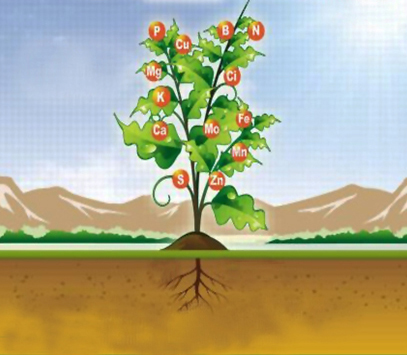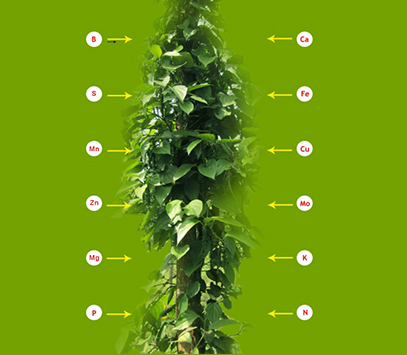ESSENTIAL ELEMENTS IN PLANT NUTRITION
Seventeen elements are found to be essential for normal plant growth and reproduction. With the exception of carbon, hydrogen and oxygen (supply from the atmosphere), all other essential elements are obtained from the soil


Essential elements can be grouped into four categories based on their origin or the relative amount a plant needs
in order to develop properly. Non mineral essential elements are derived from the air and water. Primary essential
elements are most often applied through commercial fertilizers or through manures. Secondary elements are normally
applied as soil amendments or are components of fertilizers that carry primary nutrients. Non mineral, primary and
secondary elements are also referred to as macronutrients since they are required in relatively large amounts by
plants. Micronutrients are required in very small, or trace amounts by plants. Although micronutrients are required
by plants in very small quantities, they are equally essential to plant growth.
Elements exhibit differences in mobility within the plants (Fig above). Plant nutrient deficiency symptoms are
expressed in the lower, middle and upper part of the plant depending on the extent of mobility. Mobile elements like
N, P, K and Mg express the deficiency first in the lower mature leaves. S is partially mobile and deficiency shown in
middle part. All the micronutrients Fe, Mn, Cu, Zn, B,and Mo are immobile and deficiency expressed in upper
leaves and growing parts.
NUTRIENT DEFFICIENCY SYMPTOMS OF MAJOR CROPS IN KERALA
Contact Us
+ 91 471 2527567, + 91 471 2700777

© 2019 | System conceived,designed and implemented by IIITMK


















